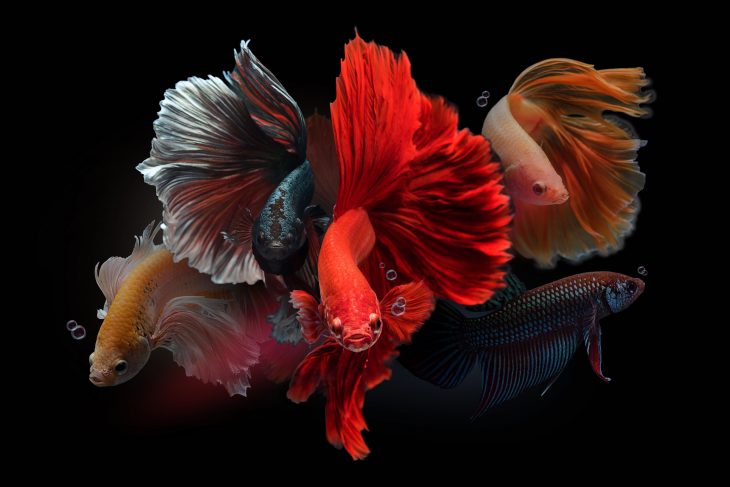
There are over seventy types of betta fish in the world. All these bettas have different purposes in life. Some would become pets, others would be wild betta fish. If you are looking to have some background knowledge about betta fish, or if you’re planning to find a pet betta for yourself, then this list can give you more than enough information.
There are many people who dabble in betta breeding, thus, it’s easy to find betta fish for sale because of this. There are also many betta fish colors for each type of betta fish. Meanwhile, the prices for betta fish differ, though. You should also take note that male betta fish are highly aggressive and would fight with each other more than not.
While we’re not entirely sure which one would be best suitable for you, or be your favorite betta fish, we have an extensive list of betta fishes to choose from. So if you’re looking for “betta fish near me” or “bettas for sale” online, you should first look into the types of betta fish before deciding to take one in.
More About the Betta Fish
The types of betta fish found in Asia are globally distributed around the world. The male bettas are aggressive and protective of their children. They’re also diurnal, which means they are awake during the day and asleep during the night. Other people call betta fishes as betta splendens or Siamese fighting fish.
Betta fishes are carnivorous by nature and should be fed maggots or insects. While they can be fed plant roots, it will not be a healthy diet for them and will eventually lead to serious complications. And while they are aggressive, they can also experience loneliness and depression. However, most of them can survive living alone in one tank, as long as you give them many things to entertain them.
Colors and Patterns of Betta Fish
It’s important to note that betta fish come in various colors and patterns. You can find a blue betta fish just as much as a purple betta fish. Their basic colors, alongside blue and purple, are yellow, turquoise, orange, and white. There are also pure black betta fish that lurk around.
As for patterns, we have the dragon scale betta, black orchid betta, butterfly betta, dalmatian betta, marble betta, grizzle betta, piebald betta, metallic betta, full-mask betta, copper betta, dragon betta, bi-color betta, Cambodian, purple betta fish, red betta fish, chocolate, black lace, melano black, koi betta fish, Thai flag, pineapple, and gold.
In this article, we list forty types of betta fish that would either help you decide which type is best for you or what you’re truly looking for.
Crowntail Betta
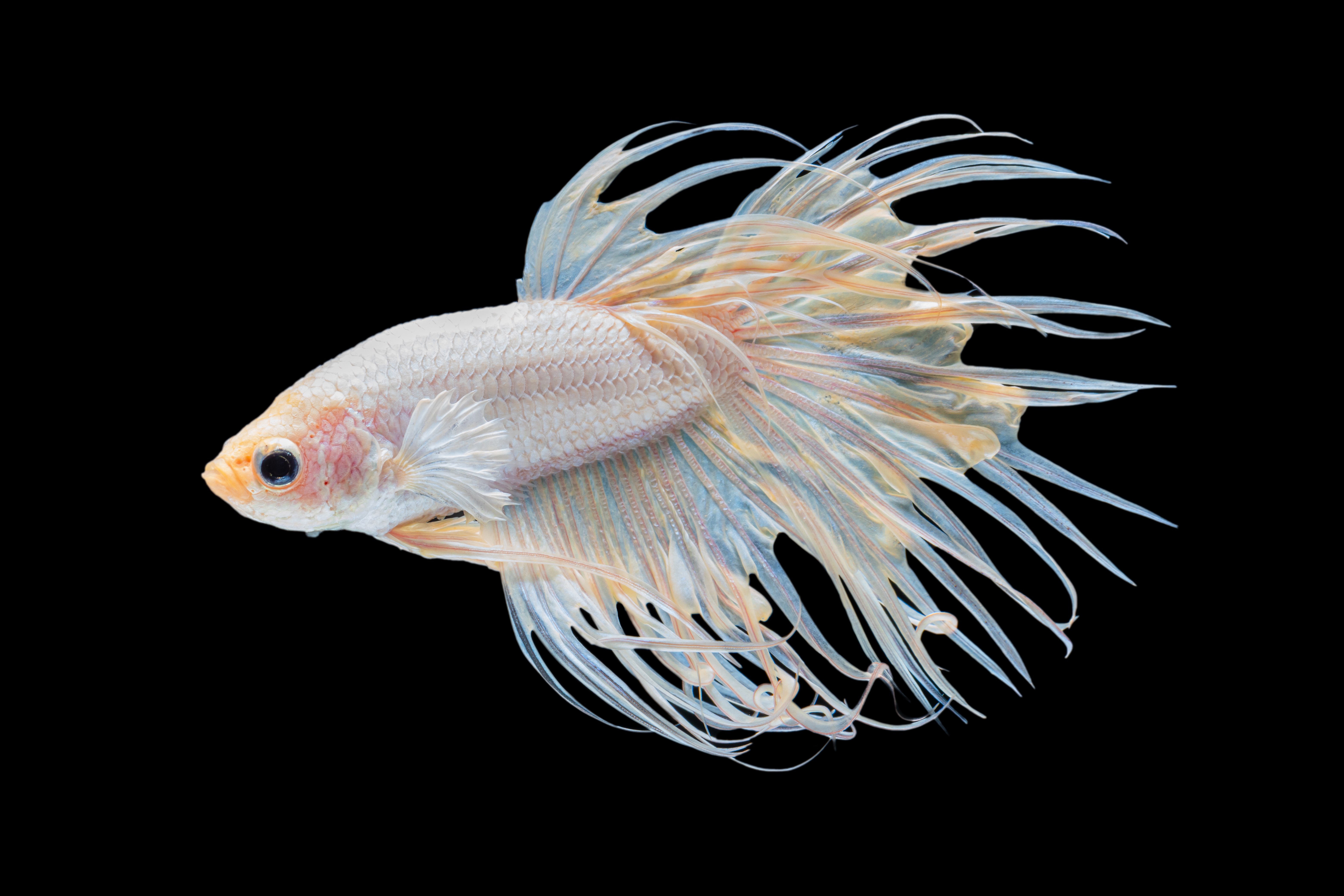
The Crowntail Betta lives in Southeast Asia. They have long and slender bodies. You will notice that the crowntail has a supra-terminal mouth. The crowntail betta’s most important factor is its fin. Male crowntails have expanding caudal fins. Sometimes, these caudal fins even expand up to the anal or dorsal fins, making them look connected.
Delta (Super Delta) Betta
People named it Delta because their fins become narrower as they grow closer to the body, making a shape similar to the Greek letter. There are also super delta betta fishes that exist. Super delta tails go as wide as a hundred and eighty degrees.
Delta fishes live in shallow ponds around Indonesia, Thailand, Malaysia, and Vietnam. Their lifespans are around two to three years.
Double Tail Betta
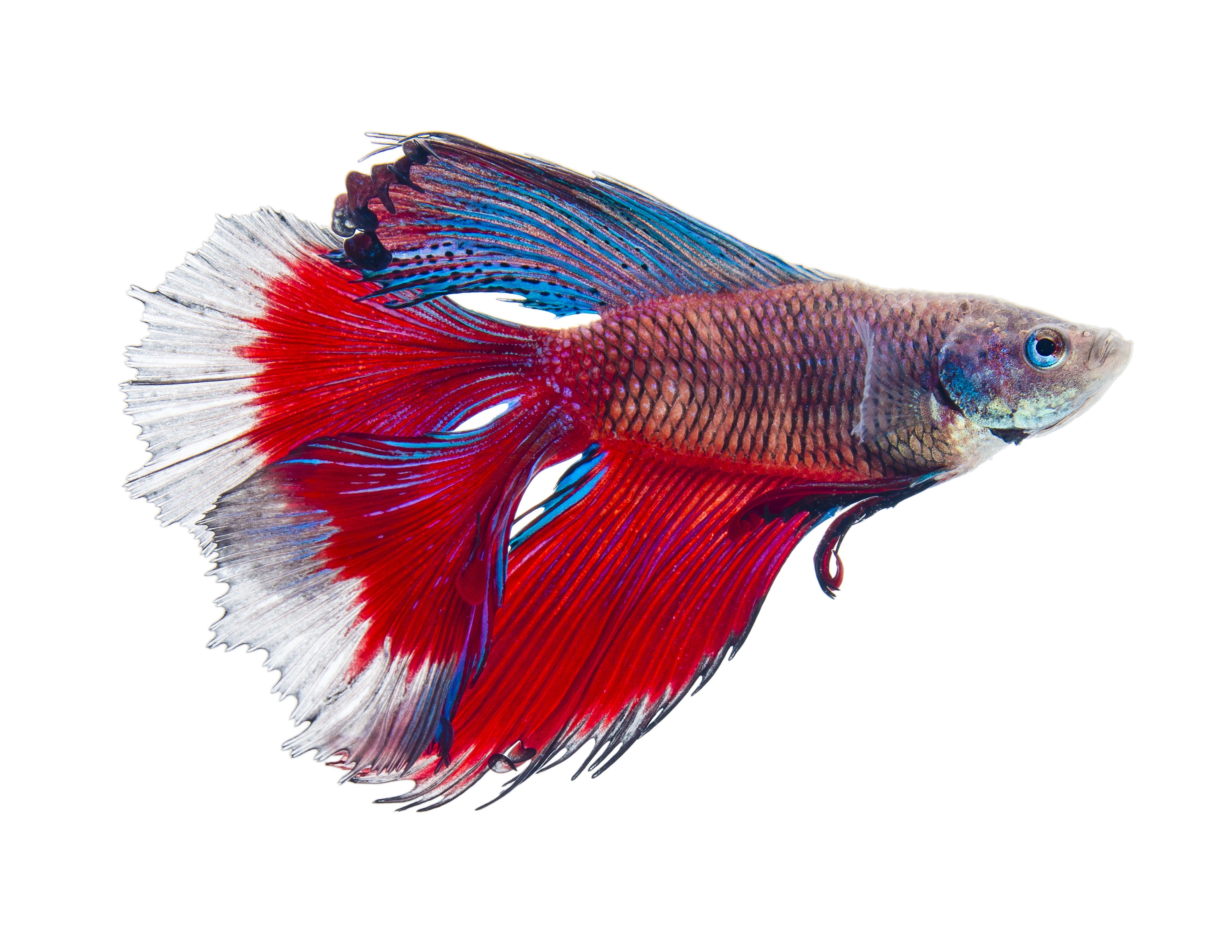
Double Tail Betta are Siamese fighting fish with two tails thanks to a genetic mutation. Since double tail betta fishes are rare, it’s only natural that their children are even rarer. The caudal fin splits into two from the base of the fish’s tail.
They usually have swim bladder problems, bloated stomach, and mating issues. They also have a short lifespan because of the mutations in their gene.
Half Moon Betta
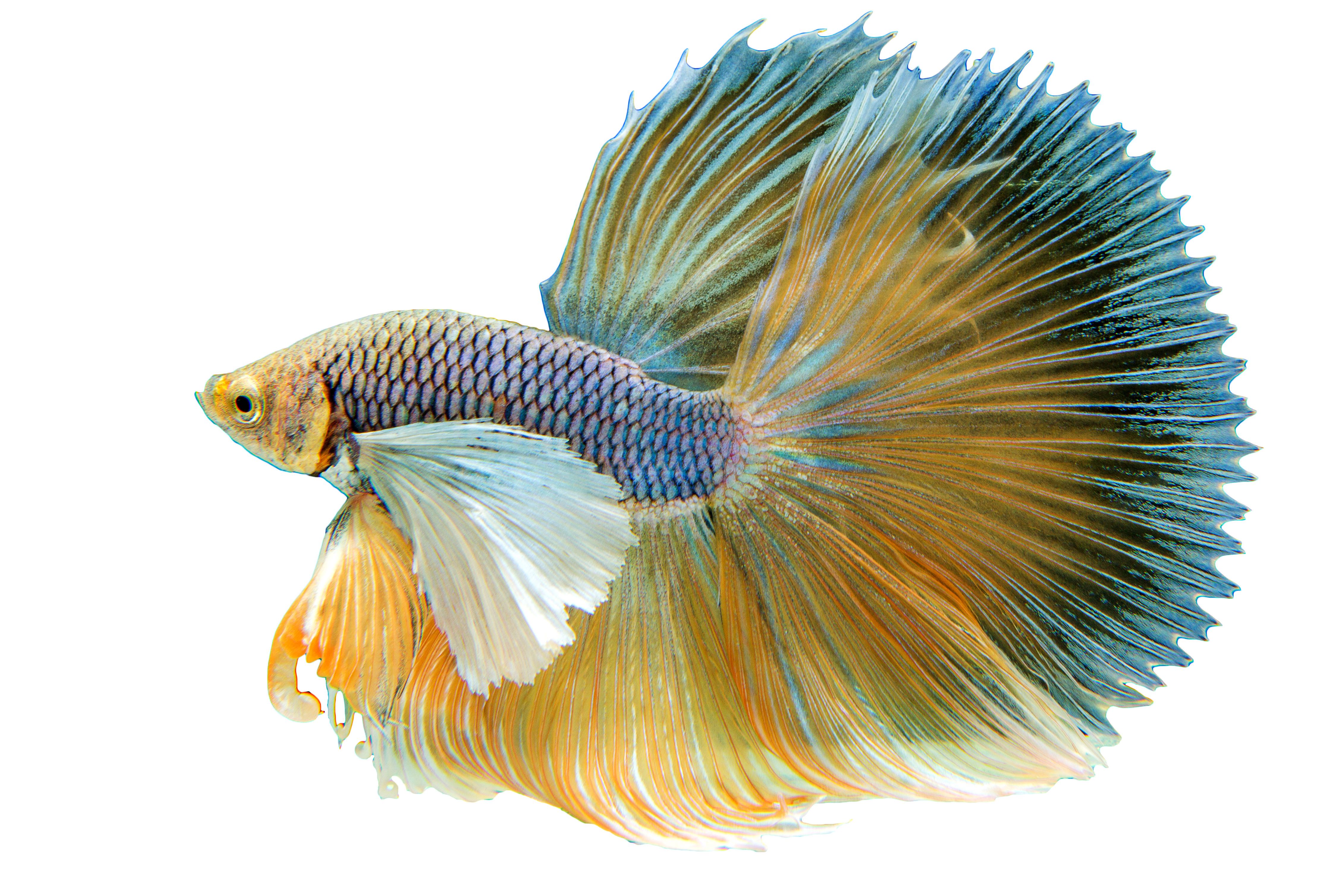
The Half Moon Betta has a 180-degree tail, with its anal and dorsal fins overlapping. We call them the half moon because their tail resembles a semicircle. They’re also just as aggressive as the rest of its Siamese fighting fish family members.
Over Half Moon Betta
The Over Half Moon Bettas have large tails and come in colors of green, blue, red, orange, and purple. Hobbyists know over half moon bettas because of the widespread of their tails, which expand over 180 degrees.
Half Sun (Comb Tail) Betta
Half Sun Betta fish are a product of breeding a crowntail and a half moon betta fish. Creating a half sun betta fish is difficult. Their tails are shaped like half moon bettas, but crown like the crowntails. They’re more aggressive than the veil tail bettas.
Plakat Betta
The Plakat Betta has a very short fin compared to its other betta family members. Their name is pronounced as pla-COT and has a striking similarity to wild betta splendens.
Plakats are extremely aggressive and have been known to jump out of their own aquariums. In Southeast Asia, they are bred specifically for fighting. This is why the plakat’s body is strong, but its fins are short.
Rosetail (Feathertail) Betta

Rosetails came from halfmoon bettas. Their fins extend longer than the average halfmoon and their tails look similar to rose petals. It’s important to note that during the last years of the rosetail bettas, these beautiful fins become a source of burden to them as they grow weak and their tails remain heavy.
Veiltail Betta

Veiltail bettas are one of the least aggressive betta fishes on this list. They have long fins that gracefully move up and flow down. Veiltails are available in almost every color you can think of.
Unlike the plakat or roundtail, veiltails aren’t strong and often glide around their aquarium rather than swim fast.
Betta Mahachaiensis

Betta Mahachaiensis is endemic only to the Gulf of Thailand. Just like the peaceful betta, they are also related to the betta splendens. They are mostly found surrounding Bangkok. Also, they live for at least five to seven years, and are known to procreate using the bubble-nesting method.
They are quite common in most pet stores. Despite being widely distributed, they were only recently discovered in 2012. However, because of human interference and urbanization, betta mahachaiensis are close to extinction, and are difficult to catch in the wild.
Smaragdina comes from the Latin word smaragdinus, meaning, emerald. The betta smaragdina have been bred for fighting competitions for over centuries. Just like the plakat betta, betta smaragdinas are not suitable as pets.
Round Tail (Fan Tail) Betta
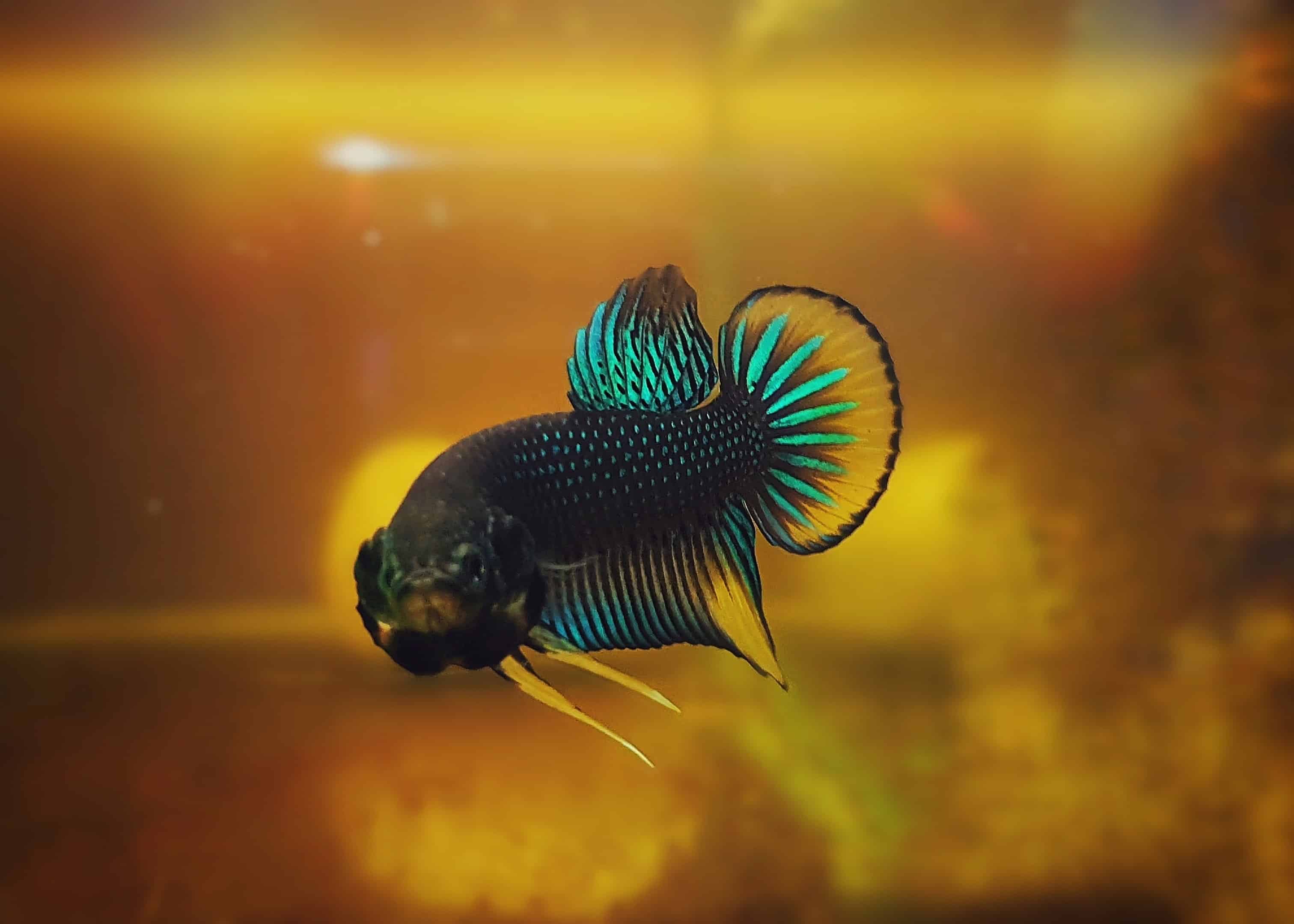
Round Tail Bettas have a similar body to plakat bettas. They have short fins with sharp edges, forming the shape of the letter d. Its fin also looks similar to a fan. They are also associated with the nickname “single tail.” Sometimes, the round tail betta can be confused with the delta or super delta betta.
Spotfin Betta
The Spotfin Betta is also known as the betta macrostoma, or for its other name, Brunei Beauty. Due to habitat loss, spotfins are included in the IUCN’s red list, which makes them endangered.
Spotfin bettas can last for as long as ten years or as short as three years, which highly depends on the care they receive.
Spotted Betta
The Spotted Betta is endemic only to Java, Indonesia. Other names for the spotted betta are betta picta and the Java Fighting Fish. They can be found living in streams surrounded by hills, and have been spotted in man-made irrigation systems as well.
Betta Channoides
The Betta Channoides name derives from snakehead fishes. They originated in Borneo, Indonesia. They are very similar to the albimarginata bettas. Betta channoides reside in shallow murky waters with high acidity.
Betta Smaragdina
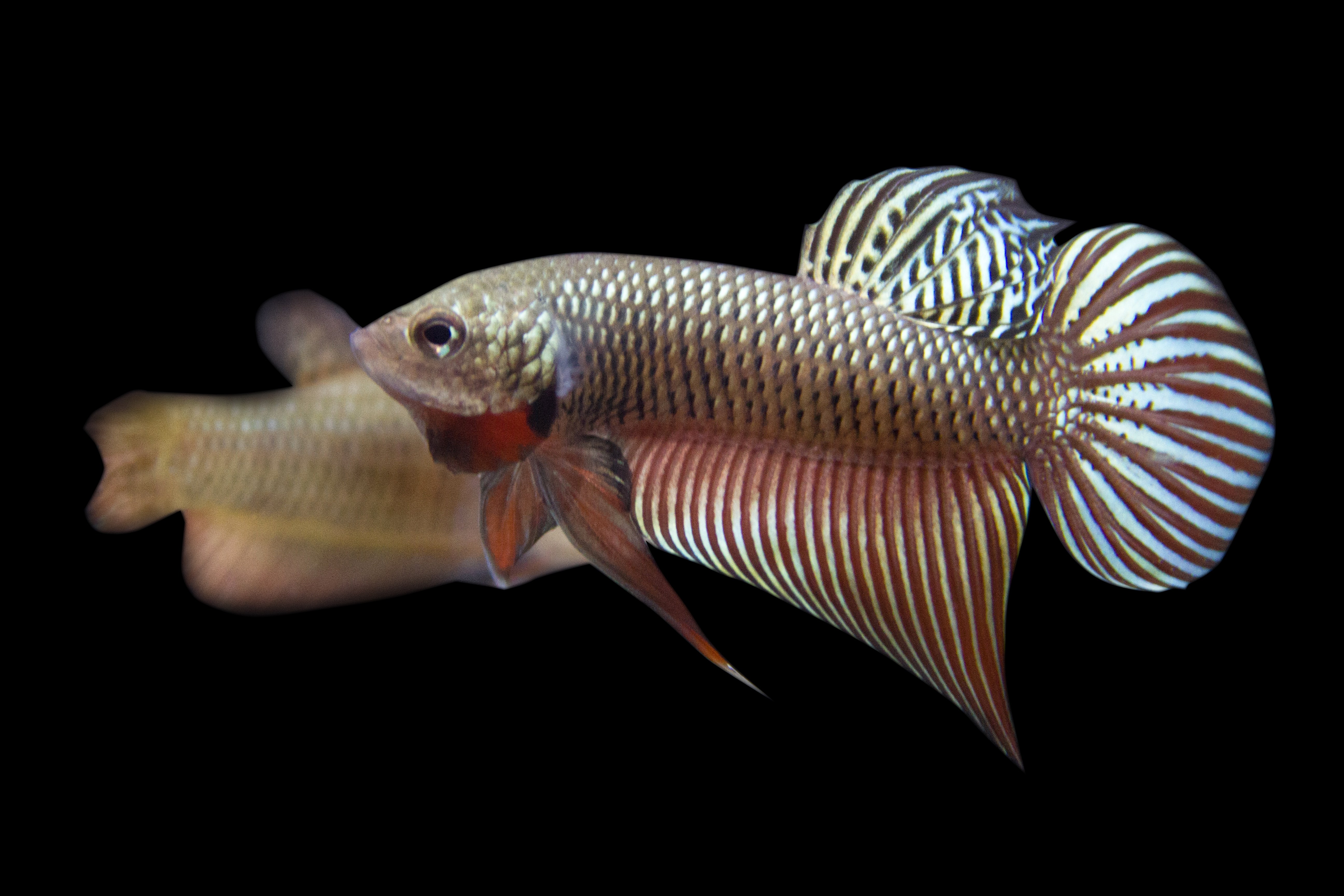
Unlike the other betta fishes, Betta Smaragdinas can actually be placed together in groups. If placed in pairs, plant life and caves are necessary inside the tank. They are also known as the emerald betta, Mekong fighting fish, and blue betta.
Betta Unimaculata
The Howong Betta or Betta Unimaculata can be found in East Borneo, Indonesia. They are mouth breeders and have a distinct similarity to killifish rather than other betta fishes.
Despite being a wild betta, the howong betta is known for its long thin body and extended anal fins. Just like the veiltail and the peaceful betta, the howong betta is very calm and docile, making them perfect as pets.
Betta Mandor
Betta Mandors can be found in West Kalimantan, Indonesia. Because of illegal deforestation, their survival is at risk. They prefer shallow pools or swampy areas. They live in water that organically spreads decaying organic pieces that release humic acids.
Betta Albimarginata
The name Betta Albimarginata derives from the Latin words albus meaning, white, and margo meaning, margin. Their name directly refers to the white margin line on their fins. Betta albimarginatas belong to the Sebuku River in Indonesia, Borneo.
Penang Betta
Penang Bettas are also known as the king betta fish, Breder’s betta, or forest betta. Found in Southeast Asian countries like Malaysia, Thailand, and Singapore, they prefer clear streams of water with sand-like floors.
Researchers have also noticed that penang bettas favor eating mosquito larvae. Because of this, people use them to organically control the mosquito population.
Peaceful Betta
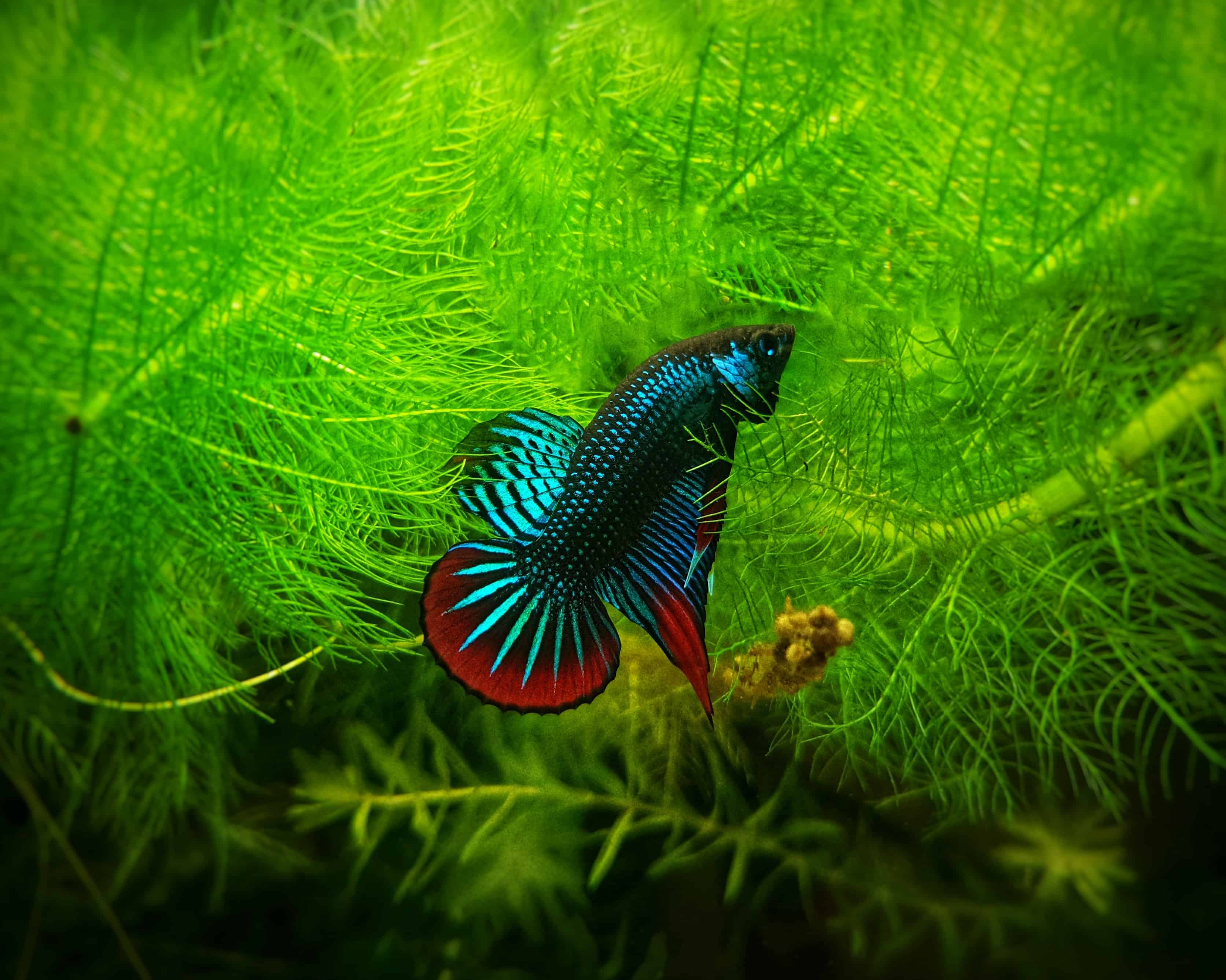
Peaceful Bettas or Betta Imbellis are more docile than betta splendens or the Siamese fighting fish. Because of this, you can find betta imbellis for sale in nearly every fish store. Peaceful bettas are more sociable in contrast to any other betta fish on this list. Although their colors, behavior, and size differ from the rest, peaceful bettas also share the trait of having labyrinth organs.
Krabi Mouth-Brooding Betta
Named after the Krabi Province in Thailand, the Krabi Mouth-Brooding Betta is often bred in captivity. These bettas are specifically found only in Khao Thong Village. Because of its rarity, there is little information readily available about the Krabi mouth-brooding betta.
Betta Persephone
The Betta Persephone is named after the Greek goddess Persephone. She is the wife of Hades, as well as the queen of the underworld. Residing in Peninsular Malaysia, their body is usually all black with bright colors at the ends of their tails.
Betta Livida
The Betta Livida’s name derives from the Latin word lividus, which means jealousy. This is because of their green eyes, and the term “green-eyed monster” is associated with jealousy. They require soft acidic water to thrive and live on the shores of the Malaysian Peninsula.
Betta Brownorum
Betta Brownorum was named after its discoverers, Barbara and Allan Brown. Endemic to Borneo around Sarawak, Malaysia, this betta has a green spot on its body. They live in blackwater places, like shallow peat swamps. Their life cycle lasts for about three to five years.
Betta Rutilans
Betta Rutilans are named after a Latin word, which means being red. You can find them in Indonesia, and just like their name describes, betta rutilans are covered with red scales. Due to heavily industrialized deforestation, they are on the IUCN’s red list since 1996.
Betta Burdigala
Betta burdigala is named after the French city of Bordeaux, which is famous for its red wine. Their bodies are red and long, and just like the betta rutilans, they are also listed in the IUCN red list as vulnerable.
Betta Strohi
Betta strohi are endemic to Indonesia. They have blackish-brown bodies with red and gold-colored opercular bars. If they are to be raised in an aquarium as pairs, they need plenty of caves and plants. Betta strohi males have more impactful colors compared to their female counterparts.
Betta Hipposideros
You can find the Betta Hipposideros in the Riau province of Indonesia, Perak, Sumatra, and Malaysia. Unfortunately, they are also on the IUCN’s red list as endangered. These large eye bettas are fairly easy to take care of. The betta hipposideros, however, don’t like sunlight and prefer dark aquariums in shaded rooms.
Betta Pallifina
If you’re curious, you can find Betta Pallifinas in Borneo. Their names are derived from two Latin words: pallidus, meaning pale, and finis, meaning fins. This is a direct description of the female pallifina’s caudal and anal fins.
Betta Spilotogena
You may find the Betta Spilotogena in the Bintan and Singkep islands of Indonesia. Frozen and live food comprise their diet. The IUCN Red List classifies spilotogena as critically endangered, and only a few images of theirs can even be found.
Betta Miniopinna
Betta Miniopinnas come in from Riau, Indonesia. Scientists named them just like the other bettas by using Latin words. Minius means cinnabar-red while pinna means fin. This is because of the pelvic fins they have.
Betta Chloropharynx
You could cross paths with this green throat mouth brooder in Sumatra, Indonesia. Some parts of Palembang city have them lurking about as well. You can also find them usually in rainforests where there’s little light that can penetrate.
Betta Chini
The Betta Chini is endemic only to Borneo, and you won’t find one in pet stores because of its rarity. Female betta chinis are more aggressive than their male counterparts. However, there’s not a lot of information on the betta chini. Chini Phui-Kong, an Ichthyologist, had this betta named after him.
Betta Tomi
You can only find the Betta Tomi around freshwater swamps in Johor, Malaysia. The difference between a male betta tomi and a female betta tomi is that males tend to have sharper fins and colors, while females have rounder ones.
Alien Betta Fish
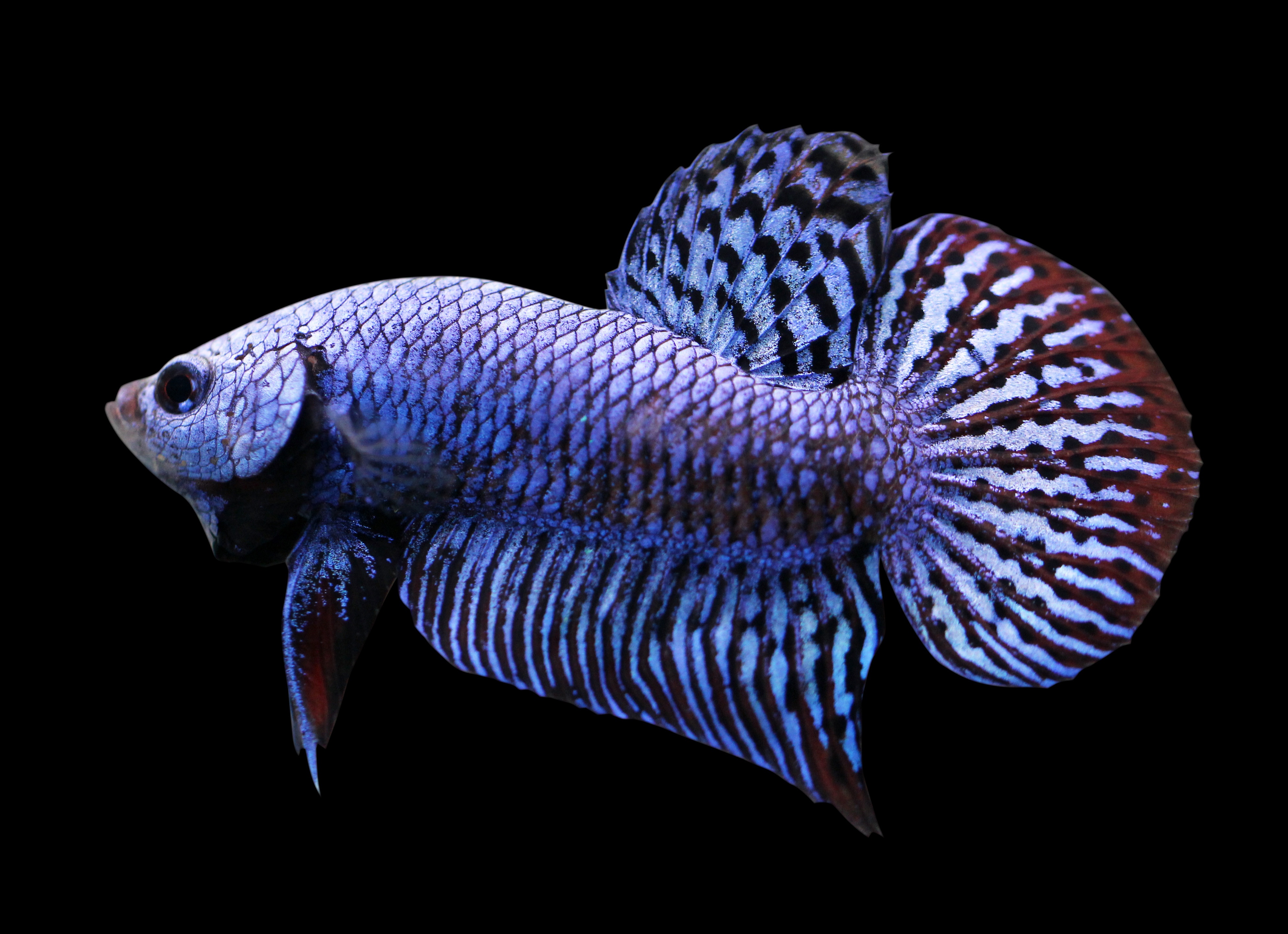
You will notice that the Alien Betta fish is peculiarly patterned, with black stripes and luminous colors. You cannot find alien bettas in the wild, since they are born through crossbreeding of two different bettas.
Orange Betta Fish
The Orange Betta fish is incredibly special. They are extremely difficult to breed and very rare to find. Moreover, orange betta fish are hard to produce. Even if the parents are both orange bettas, their offspring usually becomes yellow or red instead.
Red Dragon Betta
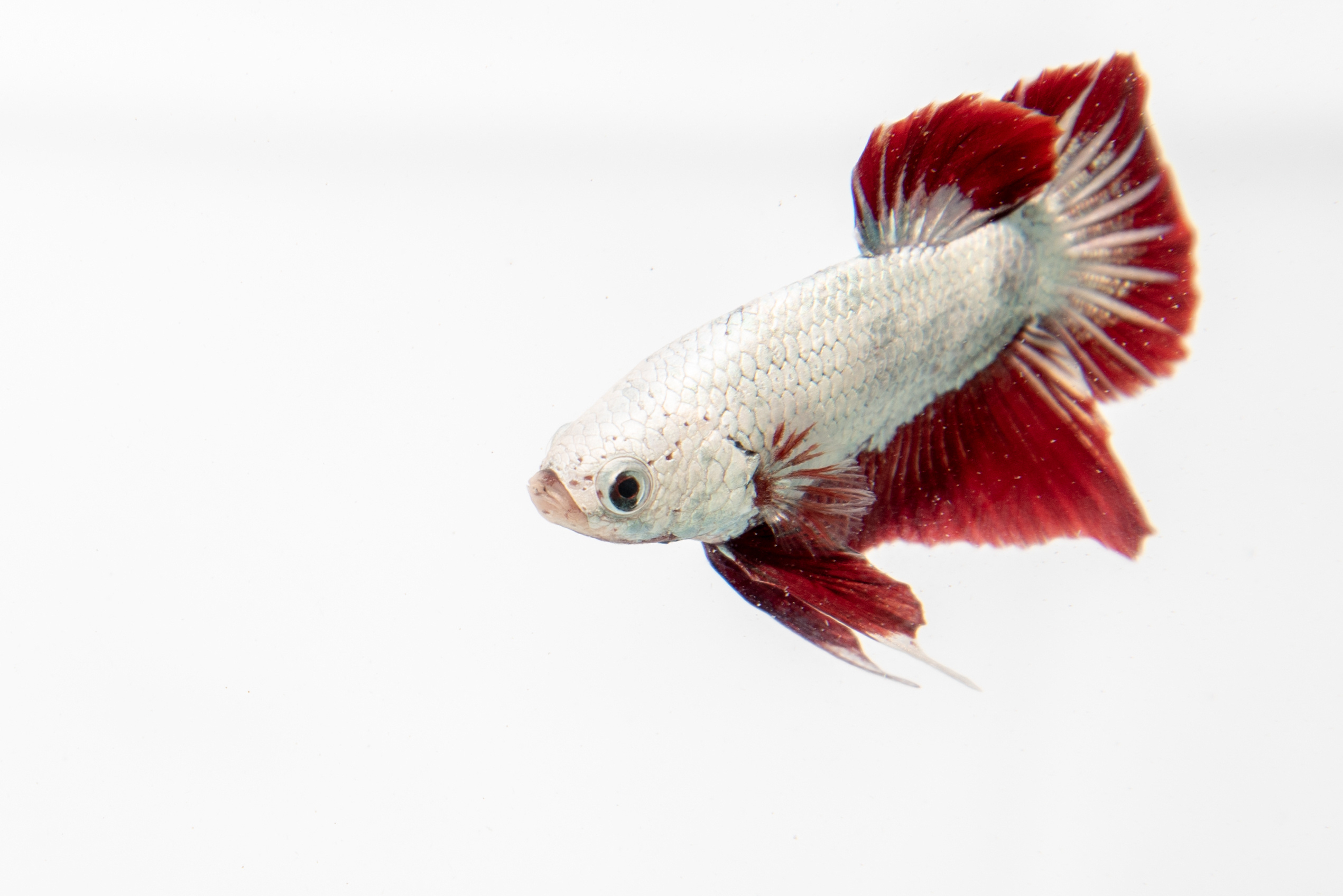
The Red Dragon Betta is a pure white betta with large fins, and deep red accents around its tail or body. Breeders pair these red dragon bettas with orange betta fish to produce rarer bettas.
Spade Tail Betta
The spade tail betta is pretty explanatory. They have a tail that’s like the shape of a spade. Whereas their body patterns are similar to that of an alien betta’s.
Orange Dalmatian
The Orange Dalmatian Betta fish is a type of orange betta with pale and orange colors surrounding its body. Enthusiasts consider their pattern and color rare than the orange betta. Moreover, it is possible to breed a red dragon betta and an orange betta to produce the orange dalmatian.
Giant Betta Fish
Last but not the least, the Giant Betta fish is, well, larger than your average betta fish. The process of creating this kind of betta fish is by pairing the largest of the group to the other to create this supersized betta.
Was this page helpful?
Our commitment to delivering trustworthy and engaging content is at the heart of what we do. Each fact on our site is contributed by real users like you, bringing a wealth of diverse insights and information. To ensure the highest standards of accuracy and reliability, our dedicated editors meticulously review each submission. This process guarantees that the facts we share are not only fascinating but also credible. Trust in our commitment to quality and authenticity as you explore and learn with us.


